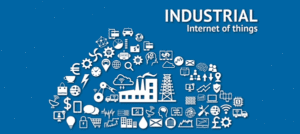Which Sectors Will Experience the Maximum Impact of Upcoming IIoT (Industrial IoT) Revolution?
Human innovation has always pushed the boundaries of what’s possible. This relentless pursuit of innovation has helped us create a world in which electronic devices are our most trusted partners in our personal life, at the workplace, and everywhere else. Now, these devices are getting smart enough to share data with each other, with minimal to nil intervention by us. In other words, the IoT revolution is upon us.
The impact of this sweeping wave of IoT revolution is being felt across the industries. But, as IoT makes its way into large-scale technology, some of the sectors are leading the transformation brought about by this latest industrial revolution, aptly named Industrial IoT (IIoT) revolution. Let’s take a look at them.
Manufacturing
Manufacturing is the single largest sector leading the IIoT revolution. According to the IDC report released in 2018, “manufacturing industry is expected to spend $189 billion on IoT solutions in 2018”. Using intelligent assets that can not only store data, but also share data and interact with each other, the manufacturing sector is becoming more efficient.
IoT can be seen transforming various areas of manufacturing including facility management, asset management, safety, predictive maintenance, quality control, packaging, logistics, production flow, and others. According to a PwC report, the manufacturers in the United States use IoT tech in the manufacturing plants, warehouses, extended supply chain, and even the customer site. This is not only reducing costs for manufacturers, but also improving employee safety on the premises. The manufacturing sector is turning a new leaf with the advent of IoT and it is going to rule the roost of IoT investment until at least 2020.
Transportation
IoT has opened up a whole box of new opportunities in the transportation sector that seek to completely transform the way in which this industry works. These seismic changes promise to not only add to profit, but also improve public safety and even the environment. No wonder the adoption of IoT devices is growing rapidly in this sector.
Smarter driving can help drivers keep a tab on their fuel costs, take better routes, control costs, and do much more. This is true for both private as well as commercial vehicles. Driverless cars have also become possible because of an ecosystem of connected devices. Driverless cars are among the most impressive applications of IoT, and naturally, they are extremely popular.
Likewise, another interesting application of IoT is emerging in the transportation industry. Vehicle insurances will soon be moving towards usage-based insurance policies. Companies will no longer be basing their premiums only on the demographics or the history of the user. They are now able to gather and utilize more specific data like driving behavior. This brand new approach to premium calculations will lead to better road behavior, lesser accidents, and overall, safer roads.
Aviation
per the 2015 SITA Airline Survey, 37% of the top 200 airlines had already allocated funds for their IoT strategy. Most airlines are already running or are planning to run research and development program in the field.
- Lufthansa Airlines currently uses weather sensor, airport, and aircraft data to improve efficiencies across their operations.
- Delta invested $50 million into RFID technology to track baggage. They offer their customers real-time tracking of their luggage to the aircraft and then to the baggage claim. With this innovation, they have managed to achieve a success rate of 99.9%.
- Air Asia has employed the flight efficiency services by GE. It will allow the airline to make the optimum use of their fleet, save fuel, become eco-friendlier and spike their profits too. It is estimated that the airline stands to save up to $50 million with this one move.
- Qantas is using IoT in an entertaining way. In collaboration with Samsung Electronics, Qantas Airlines offers its customers a completely immersive virtual reality experience. This will help the airline collect interesting data about its customers and improve their overall customer service experience.
It is not just the airlines, but also airports that are catching up with the fast pace of innovation. At the Miami International Airport, hundreds of beacons have been strategically placed throughout the airport. Passengers who use the MIA International app can receive a multitude of information that is personalized to their location within the airport and to their needs. If a passenger wants to find a lounge, they can just follow the directions (guided by the beacons) on their smartphone to reach there effortlessly.
Healthcare
Wearable technology is rising in popularity with each passing day and it is going to change the face of the healthcare sector. Wearable watches are no longer just counting the calories burnt or the number of miles the user runs. They are also monitoring the heart, keeping blood pressure in check, and performing many more critical functions. These devices have become more than just fitness accessories. They are potent tools in the preventive healthcare sector.
According to a report by the Allied Market Research, the Healthcare IoT market will reach a whopping $136.8 billion in size by 2021. This is a CAGR of 12.5% over a period of 6 years. In this sector too, it is the patient monitoring applications that will lead the growth, bringing in $72.7 billion by 2021. The cost of sensor technology is on the decline and that is expected to lead the rapid adoption of IoT devices. It is also estimated that by 2025, 1.2 billion people out of 8 billion will be elderly. This directly translates to higher healthcare costs. IoT devices may just be the technology that helps world governments tackle the ever-increasing burden of healthcare on the tax
